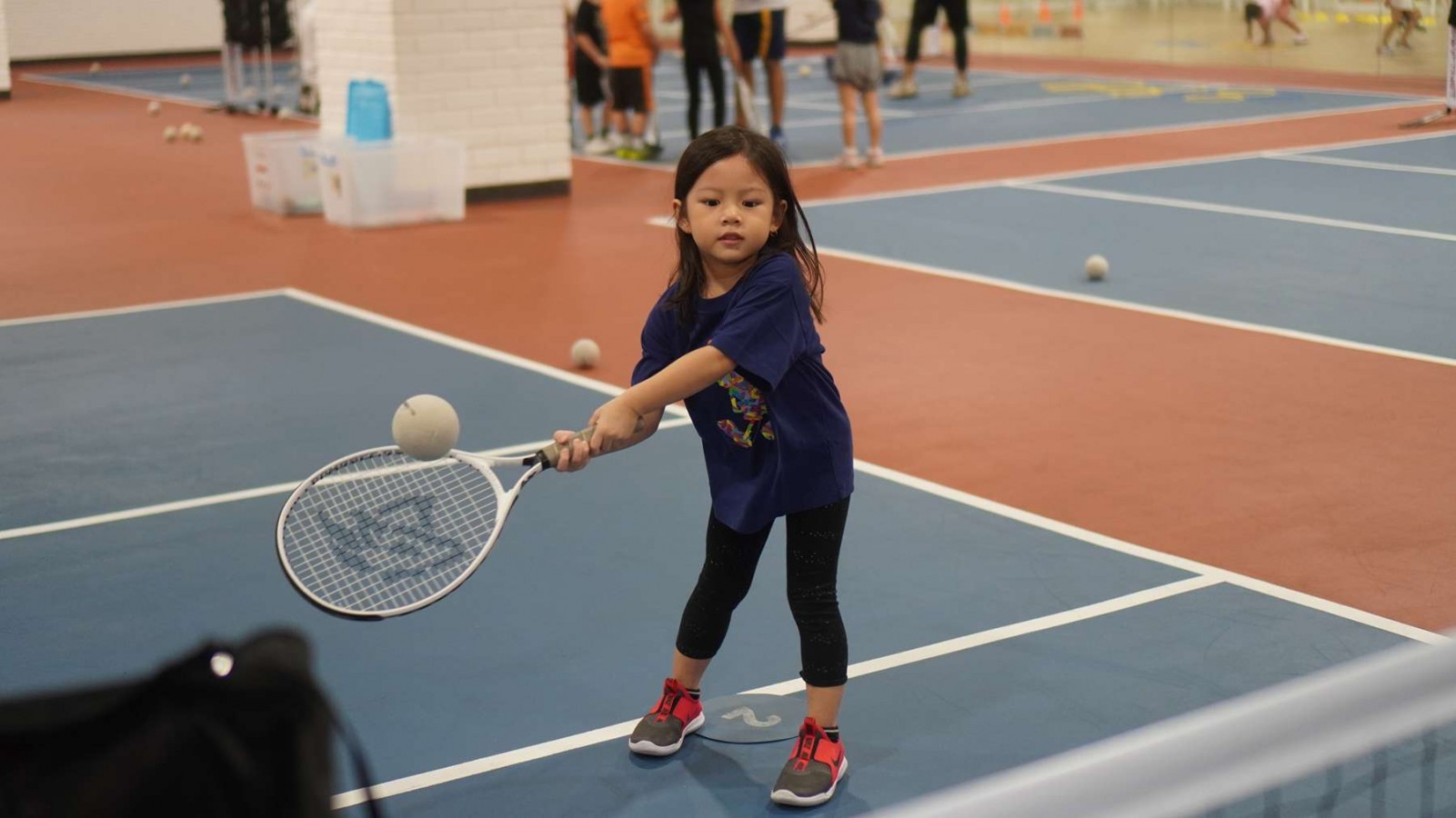Know The Differences Between Touchtennis Vs Tennis

In the world of racket sports, diversity thrives, offering enthusiasts a plethora of options to indulge their passion. Two such captivating racquet sports, Touchtennis vs Tennis, often find themselves in the spotlight, captivating players and spectators alike with their unique charms.
While both sports involve rackets and balls, the contrasts between touchtennis and tennis are striking, encompassing everything from court size to gameplay dynamics. This article aims to dissect the disparities between touchtennis and tennis, shedding light on what makes each sport distinct.
The Equipment
In the world of racket sports, equipment serves as a vital cornerstone, shaping the essence and experience of each game. When comparing Touchtennis and Tennis, the disparities in equipment become pronounced, reflecting the unique characteristics and gameplay nuances of each sport.
Here's a breakdown of the equipment differences between Touchtennis and Tennis:
1. Net Height
Given the significant variance in court dimensions, it's only natural that the net height varies between Touchtennis and Tennis. In Tennis, the standard net height stands at 3 feet 6 inches (1.07 meters) at the ends and 3 feet (0.91 meters) at the center, spanning the width of the larger court.
Conversely, Touchtennis opts for a considerably lower net height, typically measuring around 33.5 inches (0.85 meters). However, depending on the venue, the net height in Touchtennis can fluctuate between 31.5 inches (0.80 meters) to 36 inches (0.91 meters), catering to different playing environments and preferences.
2. Racquet Size
Moving on to racquet sizes, Touchtennis and Tennis diverge significantly in this aspect. In Touchtennis, racquets are notably smaller compared to their Tennis counterparts, resembling miniature versions akin to those used by young children in Tennis.
Touchtennis racquets typically measure around 21 inches (53.3 centimeters) in length, with slight variations ranging from 20.8 to 21.5 inches (52.8 to 54.6 centimeters).
Moreover, Touchtennis imposes restrictions on the size of the racquet head, capping it at a maximum of 107 square inches.
In contrast, Tennis racquets boast larger dimensions, typically spanning 27 to 29 inches (68.5 to 73.6 centimeters) in length, with head sizes ranging from 85 to 135 square inches.
This variance in racquet sizes reflects the distinct playing styles and requirements of each sport, with Touchtennis prioritizing maneuverability and precision, while Tennis emphasizes power and versatility.
3. Ball Material and Size
Perhaps the most notable distinction lies in the balls used in each sport. While both sports employ yellow-colored balls, the size and material composition vary significantly.
A regular tennis ball measures between 2.57 to 2.70 inches (6.54 to 6.88 cm) in diameter and is typically air-pressurized, constructed from rubber with additional materials such as nylon or wool.
Conversely, a Touchtennis ball is notably larger, with a diameter of 3.15 inches (8 cm), and is crafted from foam. This foam composition lends the Touchtennis ball a unique softness and bounce, contributing to the distinctive dynamics of the game.
Rules of Play
Firstly, in Tennis, the server is afforded two chances to execute a successful serve into the correct box, whereas in Touchtennis, only one attempt is permitted.
Secondly, regarding let serves, Tennis mandates a reserve if the ball hits the net and lands inside the correct box. Conversely, in Touchtennis, a serve that clips the net and remains within the box is deemed in play, avoiding the need for a re-serve.
Thirdly, the serve ball toss varies between the two sports. In Tennis, the server can toss the ball multiple times before striking it, providing an opportunity to adjust. However, in Touchtennis, once the ball is tossed, the server must promptly execute the serve without hesitation.
Furthermore, the rule regarding hitting directly to the returner differs. In Tennis, a serve that strikes the returner without bouncing awards a point to the server. In Touchtennis, the same applies, but with the additional condition that if the returner is positioned within or outside the serving box, it still counts as a point for the server.
Lastly, while both sports permit underarm and overarm serves, Touchtennis requires players to announce if they intend to serve underarm, ensuring transparency between the server and returner.
Court Dimensions
A Touchtennis court is notably smaller, approximately one-fourth the size of a standard Tennis court. A Tennis court measures 78 feet (23.7m) in length, 27 feet (8.2m) in width for singles, and 36 feet (10.9m) in width for doubles.
In contrast, a Touchtennis court spans 39.3 feet (12m) in length, with widths of 16.4 feet (5m) for singles and 19.6 feet (6m) for doubles.
This discrepancy in court size profoundly influences gameplay dynamics, with Touchtennis fostering faster-paced and more intense rallies due to its compact dimensions, while Tennis allows for greater maneuverability and strategic play across its larger expanse.
The Scoring Team
In Tennis, sets typically extend to 6 games, with a tiebreaker employed if both players are deadlocked at 6-6.
Each game progresses in increments of 15, 30, 40, with a player needing to win by a margin of two points after reaching deuce (40-40). Tiebreakers in Tennis extend to 7 points, with players switching sides every 6 points.
In Touchtennis, sets are shorter, concluding at 4 games, and extend to 5 games in the event of a 3-3 tie. Similarly, each game follows a 15, 30, 40 progression, but at 40-40, a sudden death point determines the winner of the game.
Tiebreakers in Touchtennis are truncated to 5 points, with the next point securing victory in the event of a 4-4 tie, and players switching sides every 4 points.
The Athleticism
Touchtennis offers a more accessible and enjoyable experience for players of all skill levels compared to Tennis.
While both sports require athleticism and skill to excel, Touchtennis's smaller court size and simplified rules make it more approachable for beginners.
The fast-paced nature of Touchtennis fosters quick rallies and dynamic gameplay, allowing players to engage in thrilling exchanges without the steep learning curve associated with Tennis.
As a result, individuals seeking a fun and accessible racket sport experience may find Touchtennis to be a particularly appealing option.
Choose the Game That Suits Your Style!
Touchtennis and tennis may share a common lineage rooted in racket sports, but their unique characteristics set them apart in the realm of athletic competition. The disparities between touchtennis vs tennis offer players and enthusiasts alike a rich tapestry of experiences to explore and appreciate.
Rockstar Academy offers an exceptional Touchtennis program as part of its comprehensive Sports & Performing Arts Academy. Designed to cultivate athleticism, strategy, and sportsmanship, the Touchtennis program provides students with expert coaching and access to top-notch facilities.
Moreover, Rockstar Academy organizes Touchtennis competitions, offering students the opportunity to showcase their talents and compete at local and regional levels.
To experience the excitement firsthand, Rockstar Academy invites prospective students to participate in a free trial of the Touchtennis program. This trial period allows individuals to engage with the sport, meet the coaches, and discover the unique benefits of the program before making a commitment.
Join us for a thrilling journey into the world of Touchtennis at Rockstar Academy and unlock your full potential on the court!
FAQ
What is the difference between tennis and touch tennis?
Tennis is played on a standard-sized court with larger racquets and balls, while touch tennis is played on a smaller court with smaller racquets and foam balls.
Which sport is more accessible for beginners?
Touchtennis is often considered more accessible for beginners due to its smaller court size, simplified rules, and faster gameplay, making it easier to pick up and enjoy for newcomers.



